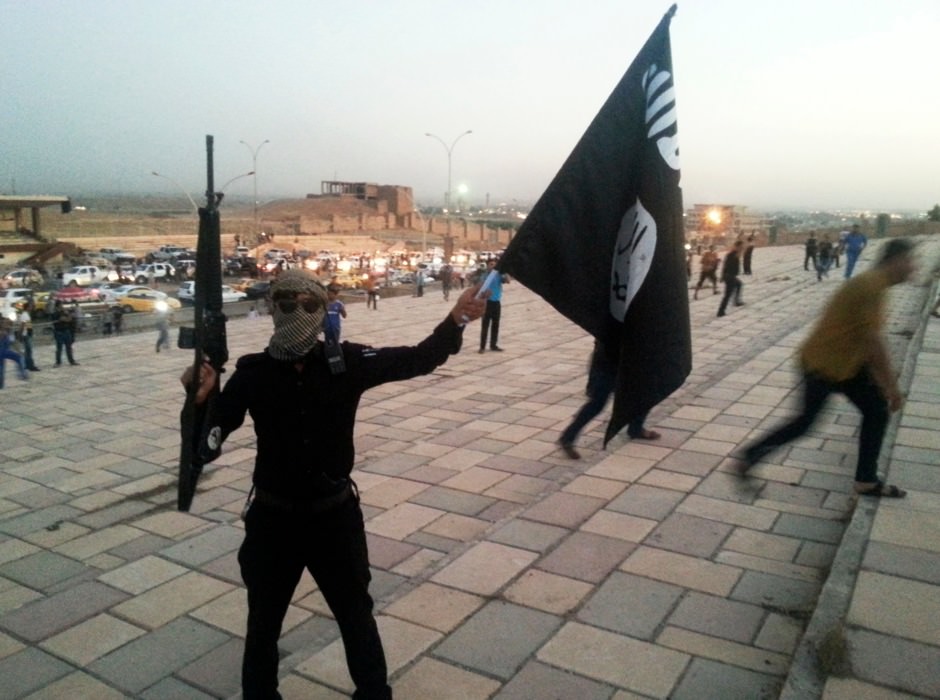In the days since the Islamic State in Iraq and Syria (ISIS) took control of much of northern Iraq, Western leaders and analysts have expressed alarm at what they have called a powerful new form of jihadism. Some have likened ISIS to a new al-Qaeda. Both assessments are wrong.
In its rapid advance toward Baghdad, ISIS has already eliminated national boundaries between Iraq and Syria, captured significant arms and weapons caches, caused a spike in global oil prices, reinvigorated ethnic and sectarian conflict across the Arab world, and given Islamic extremism a dramatic new source of appeal among many young Muslims. On June 30, the first day of Ramadan, ISIS also declared that it was reestablishing the “Caliphate,” long an aspiration of other jihadist groups.
Yet despite these accomplishments, ISIS may not be as unusual as it has been described. Nor does it seem primarily interested in global jihad. In many ways, what the group is doing to Syria and Iraq resembles what the Taliban did in Afghanistan and Pakistan in the early 1990s.
Like the Taliban, ISIS’s war so far has been about conquering territory rather than launching an al-Qaeda-style global jihad or issuing fatwas to bomb New York or London. Although it has attracted some three thousand foreigners to fight for it, ISIS’s real war is with fellow Muslims, and in particular Shias, against whom it has called for a genocidal campaign. Just as the Taliban changed the contours of Islam in south and central Asia so ISIS intends to do the same in the Middle East. ISIS is also seeking territorial control of the central Middle East region.
There are several instructive parallels between the two groups. The hardcore forces of ISIS probably number fewer than 10,000 trained fighters; the Taliban never numbered more than 25,000 men—even at the height of the US surge when there were over 150,000 Western troops in Afghanistan and twice that many Afghan soldiers.
Like the Taliban, ISIS successes are built around military competence that includes excellent command and control, sound intelligence, well prepared logistics support, training, high mobility, and rapid speed of maneuver. Just as ISIS, after years of preparation and recruiting in Iraq and Syria, has overrun Mosul and other important Iraqi cities in a matter of weeks, Taliban conquered all of southern and eastern Afghanistan in a blitzkrieg offensive in a few months in 1994. The main strategy of both groups is the frontal assault combined with outflanking movements, as well as night attacks. And both organizations are also prepared to play a long game. In 1996, after the Taliban had laid siege to Kabul from the south for two years without success, they used a flanking movement from the east to finally surprise the government and conquer the city.
An even more effective innovation of both groups is to wage battle across several countries and borders, creating multiple logistic centers and sources for recruits, while confounding national responses to them. Thus the Pakistani and Afghan Taliban treat their two countries as virtually one when it comes to fighting their opponents, while ISIS is now using tactics it perfected in Syria to capture cities in Iraq. And just as the Afghan Taliban established sanctuaries in Pakistan, where it could regroup and reequip, ISIS is now able to use territories in both Syria and Iraq to make their survival much easier and their defeat more difficult.
Both groups are preoccupied with capturing territory rather than promoting global jihad, but their militarism and their extreme Islamism renders them ill-equipped to govern the areas they control. Like the Taliban, ISIS’s political outlook is distinct from both traditional Islamic fundamentalist parties, such as the Muslim Brotherhood, and global terrorism organizations like al-Qaeda. The primitive and extreme version of Islam it imposes—already on view in ISIS-controlled Syria cities like Raqqa—terrifies local populations and demoralizes armies and governments. But as the Taliban showed before it, this way of ruling cannot constitute a viable political program in the long term.
By 2001, after the Taliban had been in power for five years, there was a massive exodus of Afghans out of the country, as people exhausted by food shortages and the lack of jobs were forced to flee. Much the same could quickly happen to ISIS—which is why ISIS is appealing for educated and skilled Muslims to join it to rebuild the caliphate. Already in northern Iraq, hundreds of thousands of Iraqis, including Christians, Shia, Kurds, and Turkmen, have fled to Kurdistan out of fear of persecution.
Unfortunately, neither mainstream Muslim leaders nor their Western allies have learned much from the experience of fighting the Taliban. No contemporary army in the Muslim world is trained to deal with ISIS or can match the level of mobility and preparedness it has demonstrated in recent weeks. Even US Special Forces who have fought the Taliban and give training in counterterrorism to foreign armies do not seem able to handle such forces.
Advertisement
But military competence is not the main issue. A larger failure of Western governments is that they continue to view the collapse of Muslim states as something to be countered by military action and counterterrorism operations, rather than by creating new regional alliances and engaging Muslim leaders themselves to deal with the problem. So far President Obama’s only concrete answer to the present global crisis is to dispatch some seven hundred US troops to Baghdad and announce the creation of a $5 billion fund for US Special Forces to train foreign armies in counterterrorism.
However, where the lack of leadership is most visible is in the Muslim world itself—from politicians, generals, and senior religious leaders in each country. Instead of a vast public movement to condemn ISIS and other such groups, there is silence, helplessness, and hopelessness. Across the region, leaders like Nouri al-Maliki in Iraq, Gulf regimes like Saudi Arabia, and many African governments, are autocratic, corrupt, cowardly, and incompetent; and nowhere is civil society strong enough to demand greater action against extremism. Rather than present Islam as a tolerant religion capable of building a modern social contract, each state blames outsiders for conspiring against it. The most commonly accused culprits are obviously the Americans, followed closely by Israel, Europe, and neighbors.
Still more dangerously, some Muslim states, including both Iraq and Pakistan, also blame minorities for state failure, and so do not defend them when they are attacked by extremists such as the Taliban or ISIS. The Sunni extremist movements that are murdering civilians today in Africa and Asia are all fighting for a deeply intolerant interpretation of Islam, seeking to impose a ruthless system of justice and punishment that targets women and adherents of other branches of Islam—especially Shias.
The ISIS campaign against Shias has surpassed anything carried out by the Taliban or al-Qaeda. In its so-called bid to cleanse all schisms from Islam, ISIS represents the worst kind of schism. If ISIS succeeds in attacking Shia holy sites in the Iraqi cities of Karbela and Najaf as it has promised to do, then the Islamic world will be plunged into a sectarian war of unimaginable dimensions. If such actions are taken we can expect conflict between Sunni and Shia that could last for years to come. Already, there is an ominous rapid growth of Shia militias in Iraq in response to the ISIS advances.
The primary political task of the United States and its allies is to get Iran and Saudi Arabia to end their hostility and come together to deal with the present crisis in the wider Muslim world. Both countries are more responsible than others for creating the current wave of extremism, including in Iraq. Since its 1979 revolution Iran has funded, armed, and trained Shia militias, terrorist groups, and Shia activists in many parts of the Muslim world, particularly Pakistan, Afghanistan, and Lebanon.
Since the 1970s the Saudis have used their extraordinary wealth to arm and fund extremist Sunni movements everywhere, of many different stripes and shades. Any group opposed to Shias and purporting a Sunni sectarian view or ideology considered close to the Saudi sect of Wahhabism has been deemed sufficiently sympathetic to receive Saudi funding—whether it was in Pakistan, Afghanistan, Africa or across the Middle East. (While there is not clear evidence of direct Saudi support for ISIS, Saudi funding of Islamic groups fighting in Syria has helped strengthen the jihadist cause.)
The Organization of the Islamic Conference and the Arab League should both be taking major steps to end state-sponsored sectarianism and bring Iran and the Arab world closer together. Together, Muslim states have to have a policy no tolerance for terrorism, rather than offering a nod and wink to favorite extremist groups. The alternative is the possible break-up of many states, a global oil crisis, and extremists getting their hands on chemical, biological, or nuclear weapons technology.




